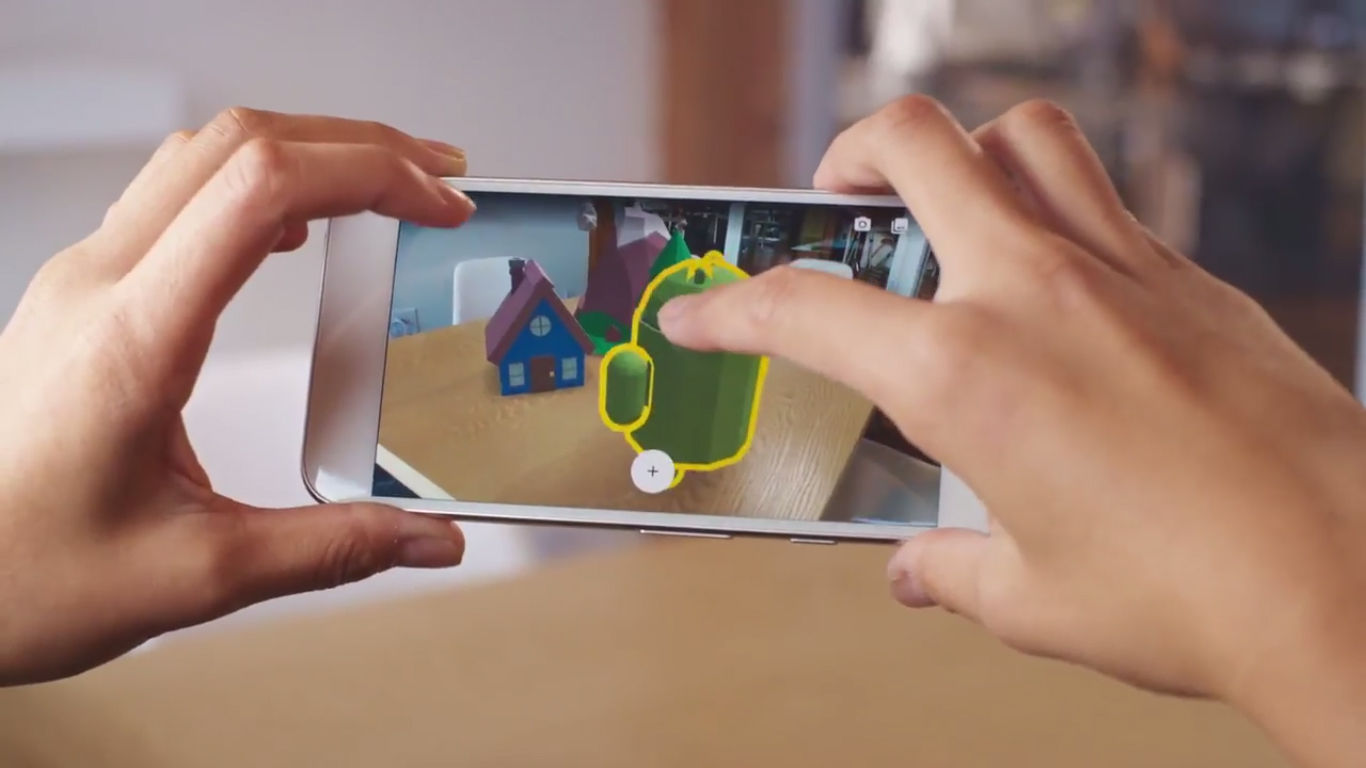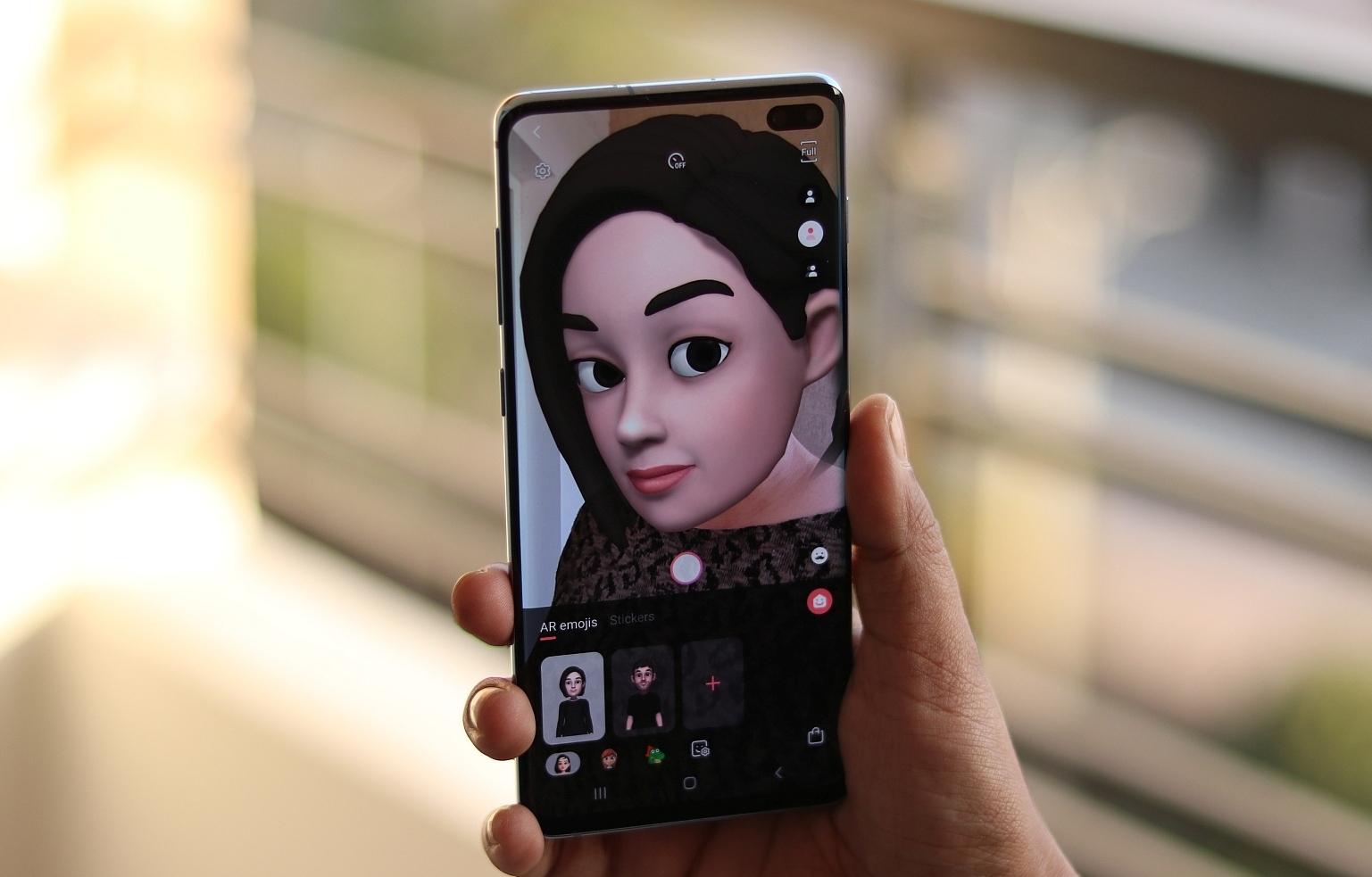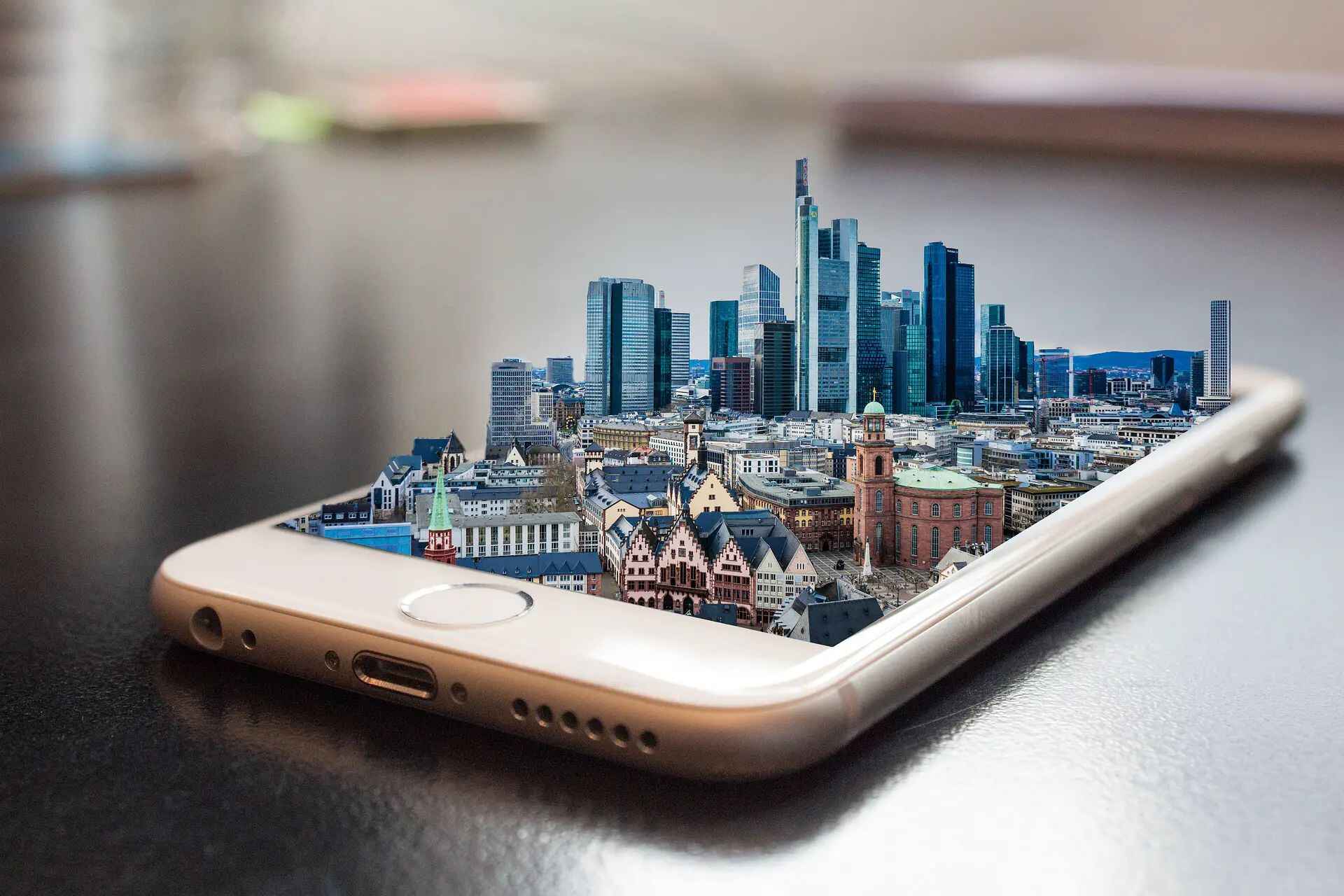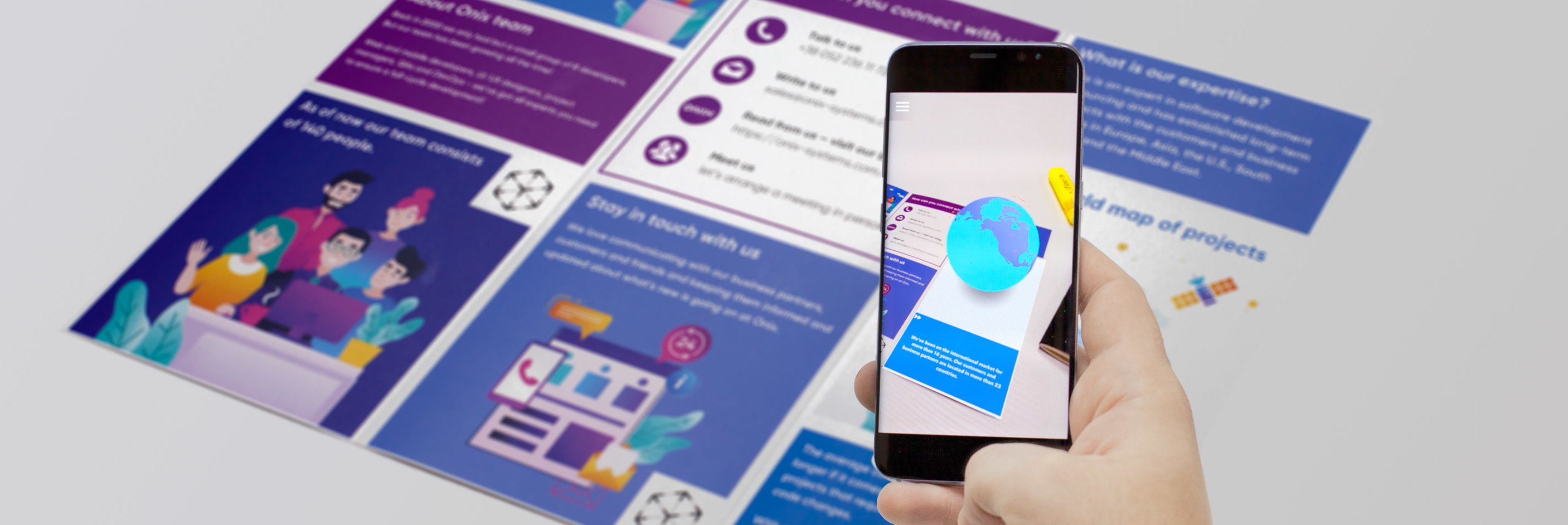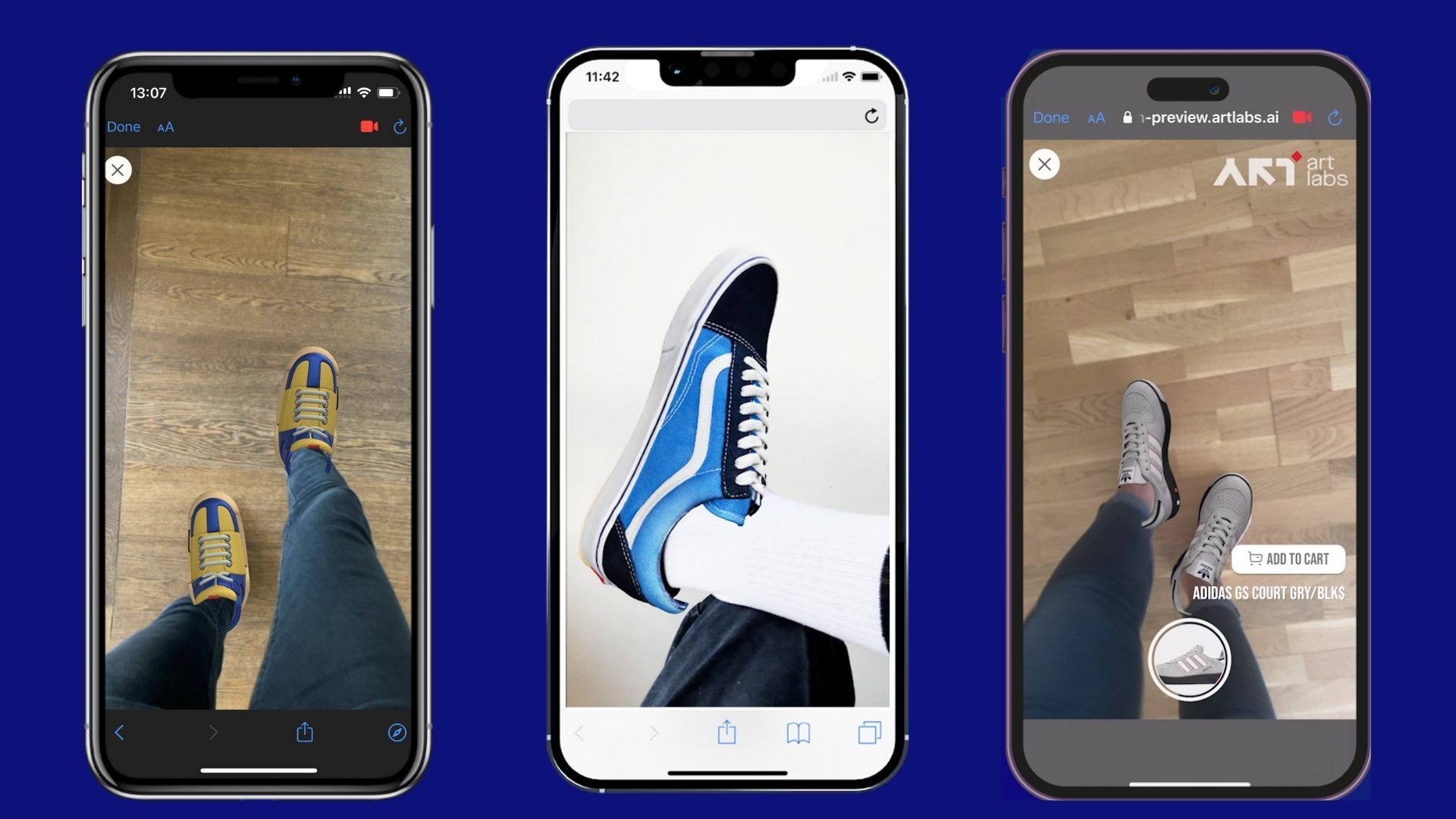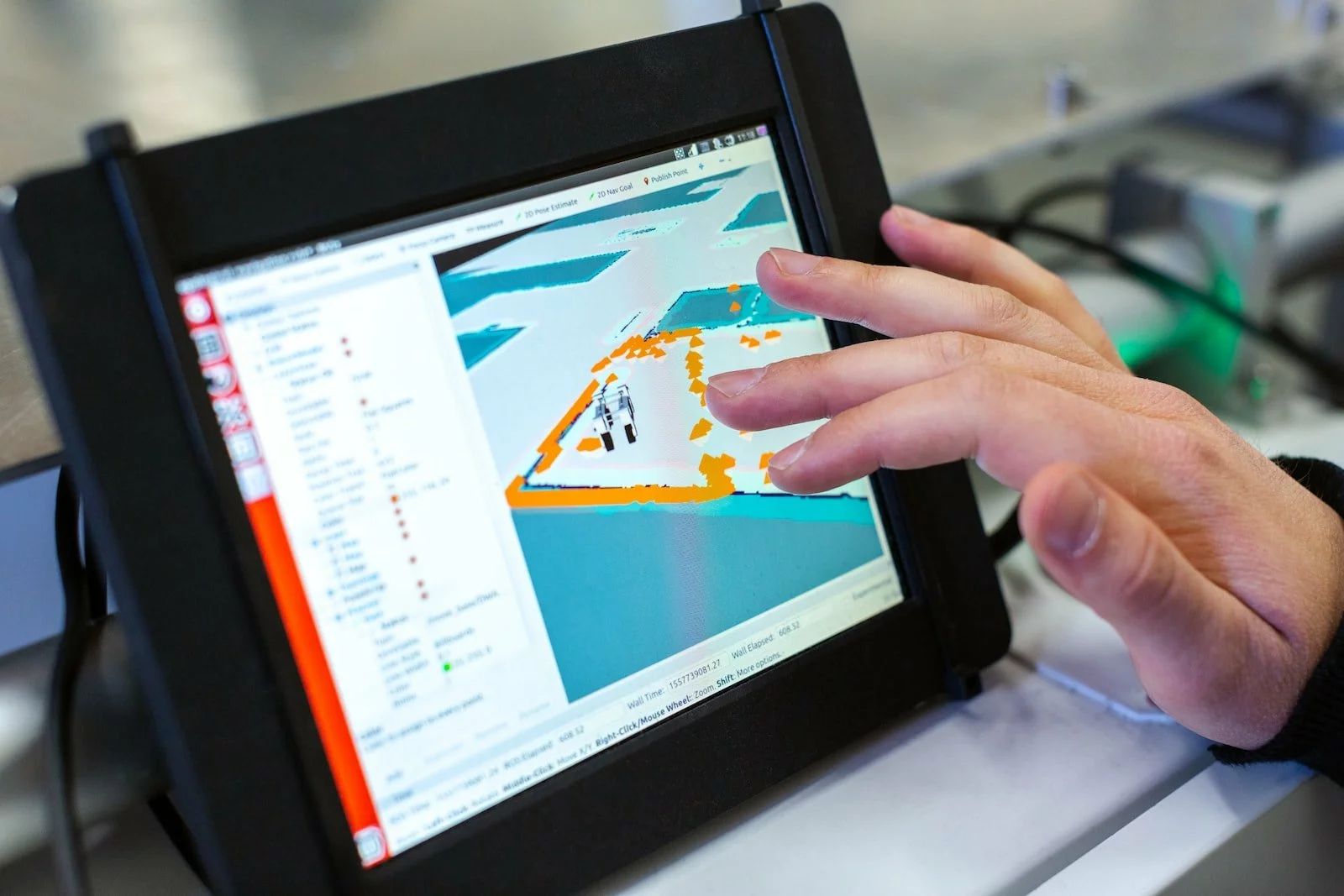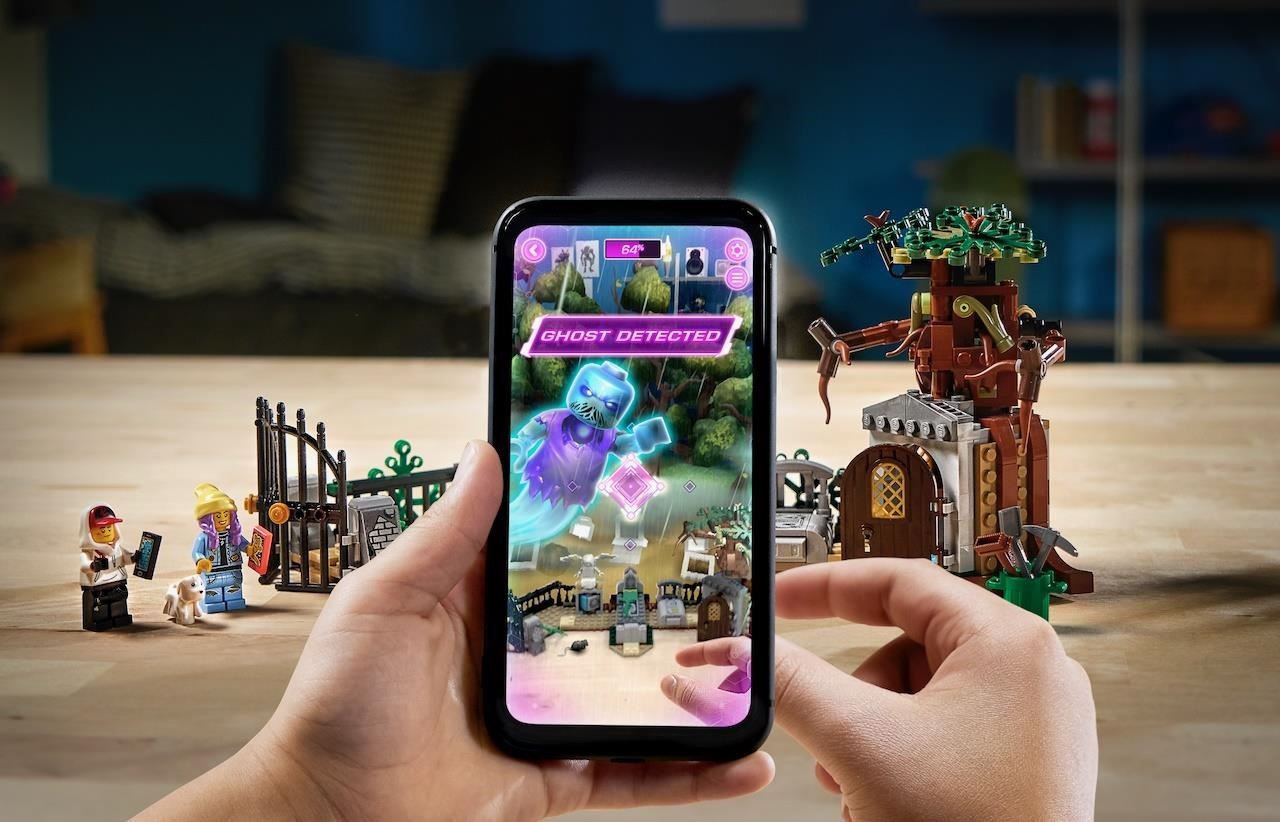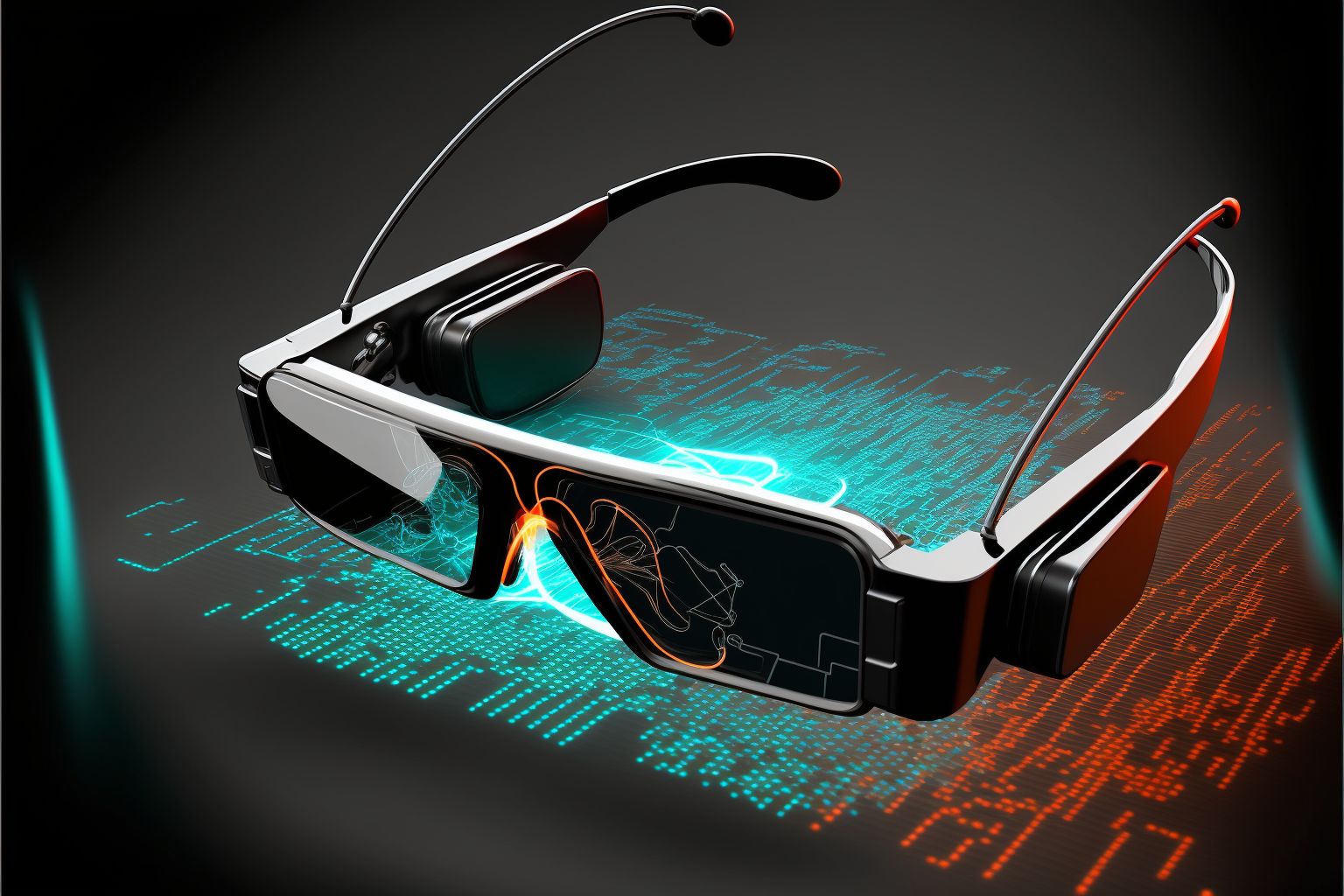Introduction
Welcome to the exciting world of augmented reality (AR) app development for Android! As technology continues to advance, AR has emerged as a popular and innovative way to enhance user experiences. It seamlessly combines virtual elements with the real world, opening up a vast range of possibilities for interactive and immersive applications.
Augmented reality apps overlay digital information, such as 3D models, animations, or text, onto the user’s view of the physical world in real-time. By using the camera and sensors of a mobile device, developers can create captivating AR experiences that blend the virtual and physical realms.
This article will provide you with a comprehensive overview of augmented reality app development for Android. Whether you’re a beginner or an experienced developer, this guide will help you get started and create your own AR apps.
Before diving into the technical aspects, it’s essential to understand the potential of augmented reality. This technology has gained popularity in various industries, including gaming, education, marketing, and healthcare. AR apps have the power to revolutionize how we interact with our surroundings and offer unique and immersive experiences.
Imagine being able to try on virtual clothes before making a purchase, explore historical landmarks without leaving your home, or play an interactive game that blends seamlessly with the real world. The possibilities are endless.
Developing augmented reality apps can be a challenging yet rewarding journey. In this guide, we will explore the tools, SDKs, and frameworks you need to create AR apps for Android. We’ll also provide step-by-step instructions on how to integrate AR capabilities into your Android app using ARCore, Google’s platform for building AR experiences.
So, if you’re ready to embark on this exciting adventure, let’s dive into the world of augmented reality app development for Android!
What is Augmented Reality
Augmented Reality (AR) is a technology that enhances the real world by overlaying virtual elements, such as images, videos, or interactive 3D objects, onto the user’s view of the physical environment. Unlike virtual reality (VR), which immerses users in a completely computer-generated environment, AR preserves the user’s perception of reality while adding virtual components to it.
The main goal of augmented reality is to provide a seamless integration of the digital and physical worlds, creating an interactive and immersive experience for users. By using a device’s camera and sensors, AR apps are able to map the user’s surroundings and accurately place virtual objects within that space.
AR technology has made significant advancements in recent years, thanks to the increasing power and capabilities of smartphones and tablets. These mobile devices have become the primary platform for AR experiences, as they are equipped with high-quality cameras and sensors necessary for accurate tracking and mapping. With the availability of AR software development kits (SDKs) like ARCore for Android, developers now have the tools to create compelling AR applications.
One of the key benefits of AR is its wide range of applications across various industries. In gaming, for example, AR allows players to interact with virtual characters and objects in their real-world environment, creating a more immersive and interactive gameplay experience. In education, AR can bring content to life by overlaying educational videos, 3D models, or additional information onto textbooks or physical objects.
AR is also increasingly being used in retail and e-commerce, where it enables customers to try products virtually, such as seeing how furniture would look in their home or trying on virtual clothes without visiting a physical store. Moreover, in architecture and design, AR allows professionals to visualize and present their ideas by placing virtual models of buildings or designs within the real environment, giving clients a better understanding of the final product.
Overall, augmented reality has the potential to change the way we interact with technology and the world around us. By seamlessly blending virtual and real elements, AR opens up new possibilities for entertainment, education, productivity, and more.
Overview of Augmented Reality App Development
Developing augmented reality (AR) apps requires a combination of software development skills and a deep understanding of AR technology. It involves designing and implementing interactive and immersive experiences that seamlessly blend virtual elements with the physical world.
The development process for AR apps typically involves the following steps:
- Conceptualization: Begin by brainstorming ideas for your AR app. Consider the target audience, the purpose of the app, and the unique value it will provide to users. This stage is crucial for defining the scope and requirements of your project.
- Design: Create a visual design for your app’s user interface (UI) and user experience (UX). Consider how users will interact with the AR elements and ensure a seamless integration with the real-world environment.
- Content Creation: Develop or source the necessary content for your AR app, such as 3D models, animations, videos, or text overlays. The quality and realism of the virtual elements play a significant role in enhancing the overall AR experience.
- Programming: Utilize a programming language, such as Java or Kotlin for Android development, to code the functionality of your AR app. This includes handling user input, rendering 3D graphics, and integrating data from device sensors, such as the camera and accelerometer.
- AR Tracking: Implement AR tracking, which involves mapping the physical environment and accurately placing virtual objects within it. This requires utilizing computer vision algorithms and sensor data to track the position and orientation of the device relative to the real world.
- Testing: Thoroughly test your AR app on a range of devices to ensure compatibility, functionality, and performance. Pay attention to factors such as frame rate, stability, and accuracy of object placement to provide users with a smooth and immersive AR experience.
- Deployment: Prepare your AR app for distribution by packaging it and uploading it to the Google Play Store. Consider including compelling screenshots, videos, and descriptions to attract potential users.
Throughout the development process, it is essential to consider best practices for AR app design. This includes optimizing performance, providing clear instructions for interaction, and creating intuitive user interfaces that seamlessly blend virtual and real elements.
AR app development can be a complex and iterative process, but the results can be incredibly rewarding. By leveraging the capabilities of mobile devices and AR platforms like ARCore, developers have the opportunity to create visually stunning and interactive experiences that push the boundaries of what is possible with technology.
Tools and SDKs for Creating Augmented Reality Apps
Developing augmented reality (AR) apps requires specialized tools and software development kits (SDKs) that provide the necessary frameworks and libraries to build immersive AR experiences. These tools help developers leverage the capabilities of mobile devices and provide the foundation for creating realistic and interactive AR applications.
Here are some popular tools and SDKs used in the development of AR apps:
- ARCore (Android): ARCore is Google’s platform for building AR experiences on Android devices. With ARCore, developers can create apps that use motion tracking, environmental understanding, and light estimation to place virtual content realistically in the real world. It provides APIs for 3D tracking, surface detection, and interaction, allowing developers to create engaging and interactive AR apps for Android.
- Vuforia: Vuforia is a widely-used AR platform that supports both Android and iOS. It provides a range of features, including image recognition, 3D object recognition, and augmented reality glasses support. Vuforia’s computer vision technology allows developers to overlay virtual content onto real-world objects, making it a popular choice for AR app development.
- ARKit (iOS): ARKit is Apple’s framework for AR development on iOS devices. It enables developers to create immersive AR experiences by leveraging the device’s camera, sensors, and motion tracking capabilities. ARKit provides features such as surface detection, real-time lighting estimation, and object occlusion, allowing for realistic virtual object placement in the physical world.
- Unity 3D: Unity is a powerful game development engine that also supports AR app development. It provides a comprehensive set of tools and features for creating interactive 3D experiences, including AR. Unity’s AR Foundation package helps developers build cross-platform AR apps that work on both Android and iOS devices, allowing for efficient development and deployment.
- Wikitude: Wikitude is an SDK that supports the development of location-based AR apps. It provides features such as image recognition, 3D model rendering, and geolocation services. With Wikitude, developers can create AR apps that overlay digital content onto specific geographic locations, making it ideal for navigation, tourism, and marketing applications.
These tools and SDKs offer a wide range of capabilities and features to create unique and engaging augmented reality experiences. They provide developers with access to computer vision algorithms, object tracking, and various rendering techniques to ensure smooth and realistic AR interactions.
When choosing the right tools and SDKs for your AR app development, consider factors such as platform compatibility, required features, community support, and documentation. It is also essential to stay up-to-date with the latest advancements in AR technology and regularly update your development tools and SDKs to take advantage of new features and improvements.
By leveraging these tools and SDKs, developers can unlock the full potential of augmented reality and create captivating and immersive AR experiences for users.
Getting Started with Android Studio
Android Studio is the official integrated development environment (IDE) for Android app development. It provides a comprehensive set of tools and features that streamline the process of creating, testing, and deploying Android applications, including those with augmented reality (AR) capabilities.
If you’re new to Android development, here’s a brief guide to get you started with Android Studio:
- Installation: Begin by downloading and installing Android Studio from the official Android Developer website. Follow the installation instructions provided to set up the IDE on your computer.
- Creating a New Project: Once Android Studio is installed, open it and select “Start a new Android Studio project.” Enter the necessary details, such as project name, app name, package name, and minimum SDK, and click “Next.” Choose the desired form factors and click “Finish” to create your project.
- Project Structure: Android Studio follows the standard project structure for Android apps. The main components are:
- app: This is where your app’s code and resources reside. It contains the Java/Kotlin files, XML layout files, and other resources needed for your app’s functionality and UI.
- Gradle Scripts: These scripts automate the build process of your app. The top-level build.gradle file manages the whole project, while the app-level build.gradle file manages the specific app module.
- Layout Design: Android Studio provides a visual editor called the “Layout Editor” that allows you to design your app’s user interface (UI) using drag-and-drop components. You can also edit the XML layout files directly for more granular control over the UI.
- Coding in Java/Kotlin: Android Studio supports both Java and Kotlin programming languages for Android app development. You can create new Java or Kotlin classes, write your code, and integrate third-party libraries and dependencies into your project.
- Testing: Android Studio provides a built-in emulator that allows you to test your app’s functionality on virtual devices with different screen sizes and configurations. You can also test your app on physical Android devices by connecting them to your computer and enabling USB debugging.
- Deployment: To deploy your AR app, you’ll need to generate a signed APK (Android Package) file. This file can be uploaded to the Google Play Store or distributed to users directly.
Android Studio offers extensive documentation, code samples, and tutorials on the official Android Developer website. It’s highly recommended to explore the available resources to gain a deeper understanding of Android app development and leverage the full potential of Android Studio.
Remember, creating AR apps in Android Studio involves additional steps, such as integrating AR SDKs (like ARCore) and implementing AR tracking functionality. These aspects will be covered in the subsequent sections of this guide.
By familiarizing yourself with Android Studio and its features, you’ll be well-equipped to start building your AR app and bring your ideas to life.
Adding Augmented Reality Capabilities to Your Android App
Adding augmented reality (AR) capabilities to your existing Android app can greatly enhance the user experience and open up unique possibilities for interaction. By integrating AR functionality, you can overlay virtual elements onto the real world, creating immersive and interactive experiences.
Here are the steps to add AR capabilities to your Android app:
- Check Device Compatibility: Before implementing AR, ensure that the user’s device supports ARCore, which is Google’s platform for building AR experiences on Android. You can check for ARCore compatibility using the ARCore SDK or by using the ARAvailability class provided by ARCore.
- Add ARCore Library: To integrate ARCore into your app, include the ARCore libraries in your project. These libraries provide the necessary APIs for AR functionality.
- Request Camera and Sensor Permissions: As AR heavily relies on the device’s camera and sensors, ensure that your app has the necessary permissions to access these resources. Include the required permissions in your app’s manifest file, and handle runtime permission requests if needed.
- Create AR Sessions: In your app’s code, create an AR session using the ARCore APIs. The AR session represents the connection between your app and the AR environment.
- Track Device Motion: Use ARCore’s motion tracking functionality to track the device’s position and orientation in the real world. This information is crucial for accurately placing virtual objects in the AR scene.
- Surface Detection: Implement surface detection to identify and track flat surfaces in the real world, such as tables or floors. This allows you to place virtual objects on these surfaces realistically.
- Rendering Virtual Objects: Utilize a 3D rendering engine, such as OpenGL or Vulkan, to render and display virtual objects in the AR scene. Consider factors like lighting and shadows to ensure realistic integration with the real-world environment.
- Implement User Interaction: Enable user interaction with the AR elements by implementing gestures, touch events, or other input methods. This allows users to manipulate and interact with virtual objects in the AR scene.
- Test and Refine: Thoroughly test your app’s AR capabilities on different devices and scenarios. Pay attention to aspects like object placement accuracy, performance, and overall user experience. Refine and optimize your implementation as needed.
It’s important to note that ARCore is continuously evolving, and new features and improvements are regularly released. Stay updated with the latest releases and documentation to leverage the full capabilities of ARCore and deliver cutting-edge AR experiences to your app users.
By following these steps and integrating AR capabilities into your Android app, you can provide users with engaging and immersive AR experiences that blend seamlessly with the real world.
Using ARCore to Create Augmented Reality Apps
ARCore is Google’s platform for building augmented reality (AR) experiences on Android devices. It provides a comprehensive set of tools, libraries, and APIs that developers can leverage to create immersive and interactive AR apps. Here’s a guide on using ARCore to develop AR apps:
- Set Up Your Development Environment: Start by ensuring that you have the latest version of Android Studio installed on your computer. Install the ARCore SDK and add it as a dependency in your project.
- Enable ARCore: Check if the user’s device supports ARCore by using ARCore’s availability check API. This will determine whether to enable AR features in your app for that specific device.
- Create an AR Session: In your app’s code, create an AR session object using the ARCore APIs. The AR session manages the device’s camera, sensors, and tracking, acting as the bridge between the physical environment and the virtual world.
- Implement Motion Tracking: Utilize ARCore’s motion tracking capabilities to track the device’s position and orientation in real-time. This enables your app to accurately overlay virtual objects on the real world, taking into account the user’s movements.
- Perform Environmental Understanding: Use ARCore’s environmental understanding features to detect and understand the real-world environment. This includes identifying flat surfaces, estimating lighting conditions, and recognizing 3D objects or images.
- Render Virtual Objects: Utilize a 3D rendering engine, such as OpenGL or Vulkan, to render virtual objects in the AR scene. Use ARCore’s pose data and mapping information to position and integrate virtual objects into the real world.
- Enable User Interaction: Implement user interaction with virtual objects by handling touch or gesture input. This allows users to interact with and manipulate virtual elements within the AR environment.
- Optimize Performance: Pay attention to performance optimization techniques to ensure smooth and responsive AR experiences. Consider factors like frame rate, object occlusion, and battery efficiency when developing your app.
- Test on Various Devices: Test your AR app on different Android devices to ensure compatibility and performance. Consider the varying hardware capabilities and limitations of different devices and adjust your app accordingly.
- Continuously Update and Improve: Keep up with the latest ARCore updates, as Google regularly releases new features and improvements. Stay connected with the ARCore developer community, participate in forums, and explore sample projects to learn from and improve your AR app development skills.
ARCore provides a powerful platform for building AR apps on Android, allowing developers to create engaging and immersive experiences that blend the digital and physical worlds. By leveraging ARCore’s features and following best practices, you can unlock the full potential of augmented reality and create innovative AR apps.
Building an Augmented Reality App from Scratch
Building an augmented reality (AR) app from scratch involves combining various technologies and development tools to create an immersive and interactive AR experience. While the process can be complex, it can be broken down into manageable steps. Here’s a guide to help you get started:
- Define the Purpose and Scope: Determine the objective and target audience for your AR app. Establishing a clear vision and understanding of what you want to achieve will guide the development process.
- Conceptualize the AR Experience: Brainstorm and sketch out the AR experience you want to create. Consider how the virtual and real elements will interact, the user’s perspective, and the overall flow and design of the app.
- Gather Required Assets: Depending on your app’s concept, you may need various assets such as 3D models, animations, audio files, or images. Create or source these assets, ensuring they align with your app’s vision and objectives.
- Choose the Development Tools: Select the development tools and software that best suit your needs. Frameworks like Unity 3D or ARCore/ARKit can help streamline the development process and provide a range of features for AR app development.
- Implement AR Features: Integrate AR capabilities into your app using the chosen tools or libraries. This involves utilizing motion tracking, surface detection, and environmental understanding to seamlessly blend virtual elements with the physical world.
- Design the User Interface: Create an intuitive and user-friendly interface for your AR app. Consider how users will interact with the virtual elements, ensuring that the interface complements the immersive AR experience.
- Develop Interactive Functionality: Program the interactive features of your AR app, including user gestures, object manipulation, or animations. This enables users to engage with the virtual elements and enhances the overall user experience.
- Test and Refine: Thoroughly test your AR app on different devices, considering factors like performance, stability, and user experience. Gather feedback and identify areas for improvement, refining and optimizing your app iteratively.
- Deploy and Distribute: Prepare your AR app for deployment. Generate signed APKs or submit your app to relevant app stores, ensuring that all necessary documentation, screenshots, and descriptions are provided to attract potential users.
Building an AR app from scratch can be challenging but rewarding. Embrace the iterative nature of development, continuously refining and improving your app based on user feedback and technological advancements. Stay updated with the latest developments in AR technology and explore new features and capabilities to push the boundaries of what’s possible in augmented reality.
Remember, creating a successful AR app requires a balance of technical expertise, creativity, and an understanding of user expectations. By following this guide and experimenting with different techniques, you can build a captivating and immersive AR app from scratch.
Best Practices for Designing Augmented Reality Apps
Designing augmented reality (AR) apps requires a thoughtful approach to ensure a seamless and immersive user experience. As users interact with digital content overlaid on the real world, it is crucial to follow best practices that optimize usability, immersion, and engagement. Here are some key considerations when designing AR apps:
- User-Centric Interface: Place user interaction at the forefront of your design. Ensure that controls and menus are intuitive and easy to use. Consider the physical environment and provide mechanisms for users to orient themselves within the AR experience.
- Clarity and Simplicity: Keep the visual elements simple and easy to understand. Avoid cluttering the AR scene with too much information, as it can overwhelm the user. Use clear and concise instructions to guide users in interacting with AR objects.
- Realism and Contextual Integration: Strive for a seamless integration of virtual objects within the real world environment. Pay attention to details such as lighting, shadows, and object placement to enhance the realism. Ensure that virtual objects respond to the physical environment and move and scale accordingly.
- Consistent Feedback and Visual Cues: Provide clear visual cues and feedback to guide users’ actions. Use animations or visual indicators to indicate the status of interactions, such as highlighting interactive elements or providing visual feedback when an action is completed.
- Object Interaction and Manipulation: Design the user interface to enable intuitive and interactive object manipulation. Utilize gestures like tapping, swiping, or pinching to allow users to interact with virtual objects. Provide visual and haptic feedback when users interact with AR objects.
- Engaging Experiences: Create AR experiences that captivate and engage users. Consider gamification elements, storytelling techniques, or social interactions to enhance user engagement and immersion within the AR app.
- Performance Optimization: Strive for optimal performance to provide a smooth and responsive AR experience. Optimize rendering techniques, reduce latency, and minimize battery consumption to ensure that users can enjoy the AR app without interruptions.
- User Testing and Iteration: Test your AR app with real users to gather feedback and identify areas for improvement. Evaluate user interactions, understand pain points, and iterate on the design to enhance usability and user satisfaction.
- Accessibility Considerations: Design AR apps with accessibility in mind. Ensure that users with disabilities can fully enjoy the AR experience by providing alternative interaction methods, considering color contrast, and incorporating accessibility features into the app’s interface.
- Guidelines and Documentation: Refer to design guidelines and documentation provided by AR platforms or SDKs. Understand the recommended practices and utilize the available resources to ensure that your AR app follows industry standards and best practices.
By adhering to these best practices for designing AR apps, you can create user-friendly, engaging, and immersive experiences. Keep in mind that designing for AR requires a balance between aesthetics and functionality, and continuously adapt your design based on user feedback and technological advancements to push the boundaries of what’s possible in augmented reality.
Conclusion
Augmented reality (AR) has emerged as a revolutionary technology that seamlessly blends virtual elements with the real world, offering endless possibilities for interactive and immersive experiences. This guide has provided an overview of augmented reality app development for Android, covering everything from understanding AR concepts to implementing AR capabilities in an app.
We explored the tools and SDKs available for creating AR apps, such as ARCore, Vuforia, and Unity 3D, which provide essential features for tracking, rendering, and interacting with virtual objects. We also discussed the importance of designing user-centric interfaces, optimizing performance, and following best practices to create engaging and seamless AR experiences.
Whether you are a beginner or an experienced developer, building AR apps from scratch involves various stages, including conceptualization, asset gathering, motion tracking, and user interaction. It’s crucial to consider factors like realism, simplicity, and performance optimization throughout the development process.
Remember, AR technology is continuously evolving, and staying updated with the latest developments and releases is essential. Be sure to explore documentation, code samples, and community forums to enhance your skills and take advantage of new features and improvements.
By combining technical expertise, creativity, and a user-centered approach, you have the opportunity to create AR apps that captivate and engage users, transforming the way they interact with the world around them. So, take the knowledge gained from this guide, dive into the world of augmented reality app development, and bring your innovative ideas to life.







